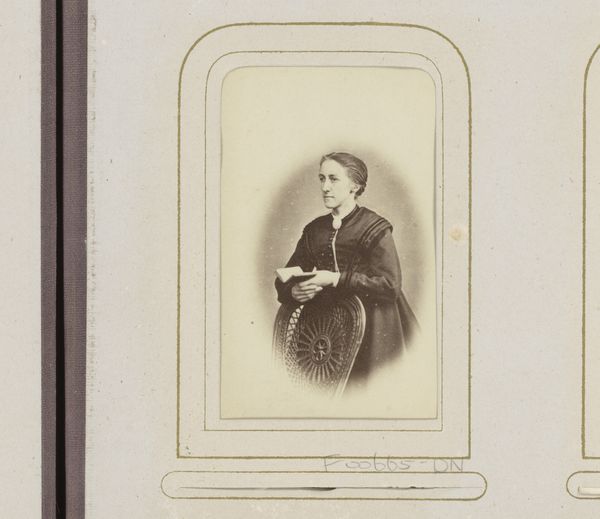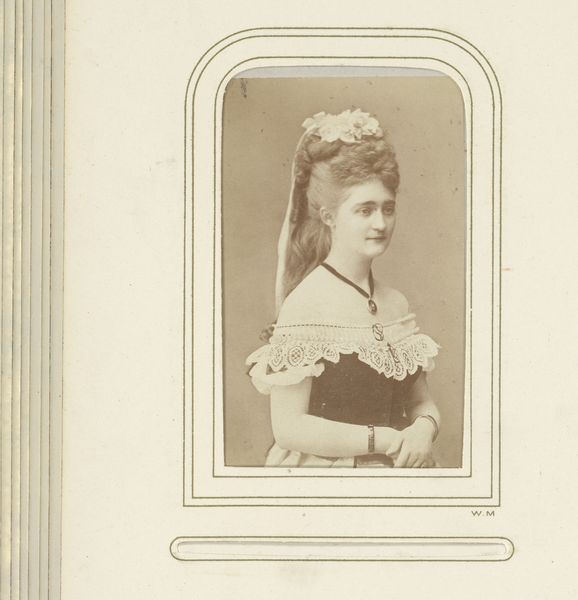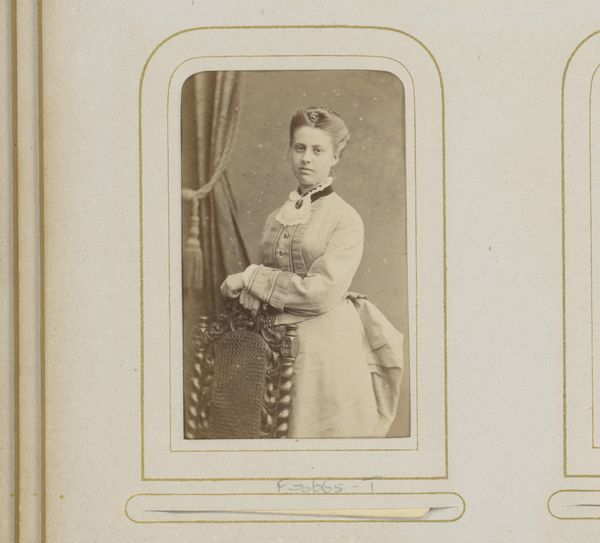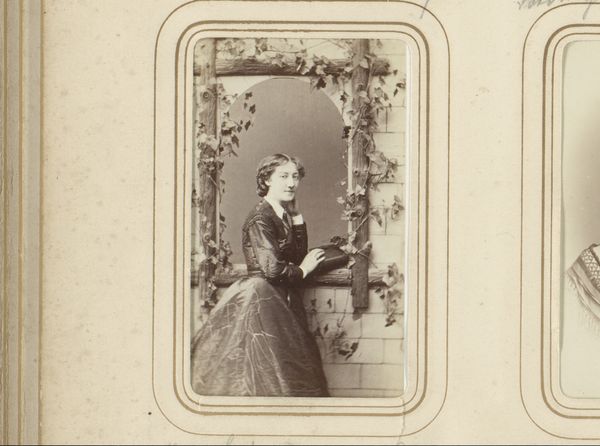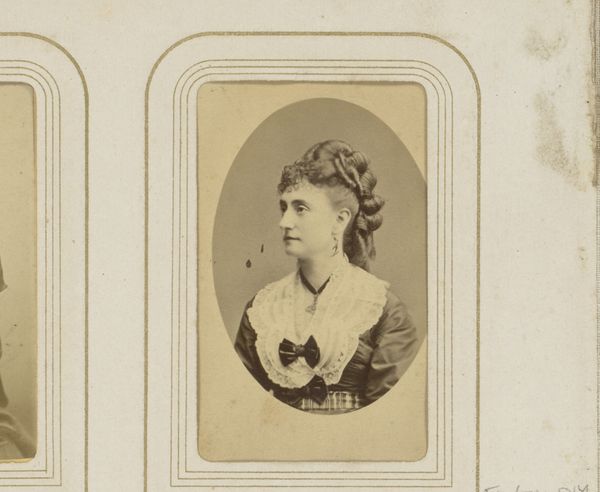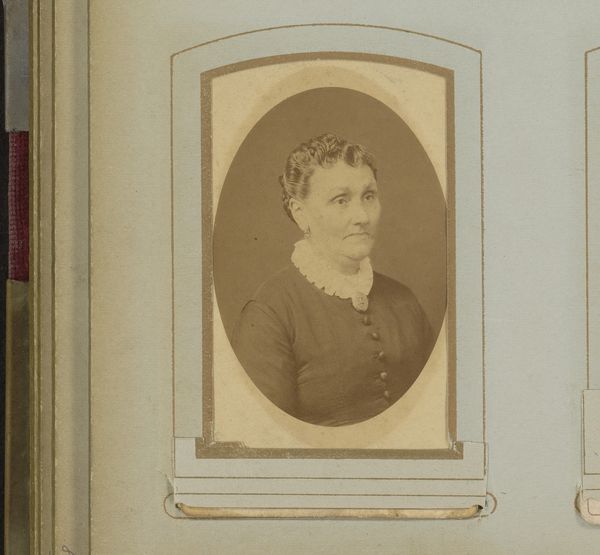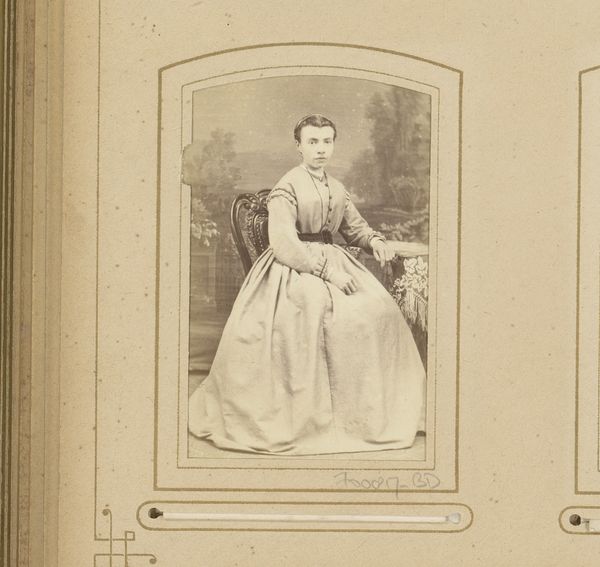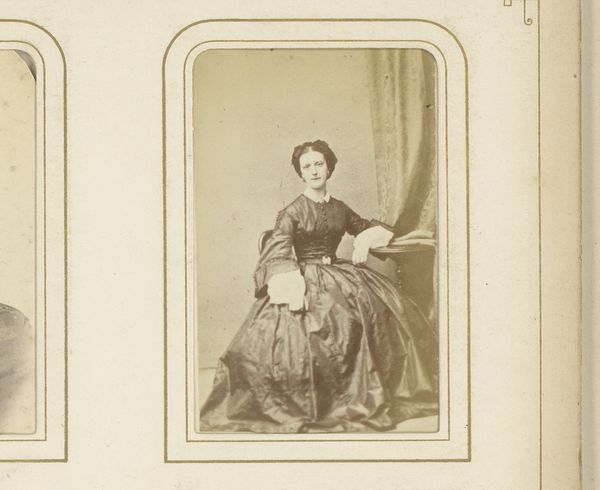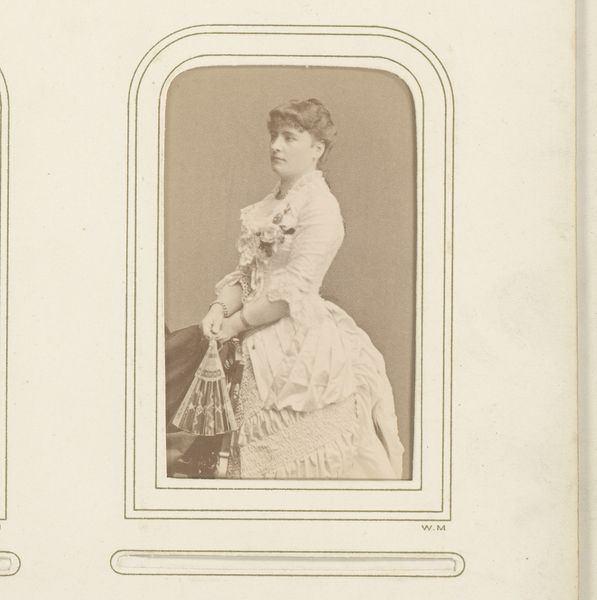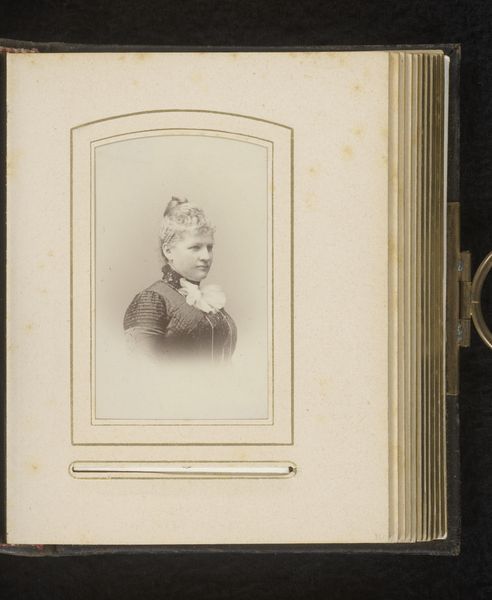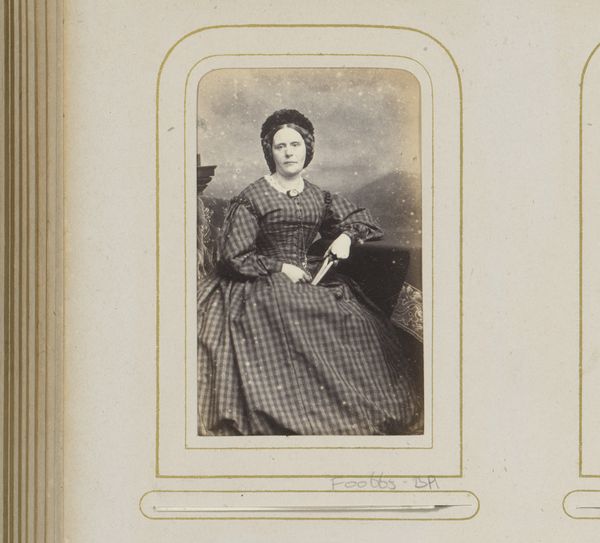
paper, photography, albumen-print
#
portrait
#
paper
#
photography
#
coloured pencil
#
albumen-print
Dimensions: height 84 mm, width 50 mm
Copyright: Rijks Museum: Open Domain
Editor: This is an intriguing photograph from the Rijksmuseum, dating from between 1860 and 1900, entitled "Portrait of Princess Emma of Waldeck-Pyrmont." It appears to be an albumen print, and what really strikes me is the incredible detail rendered with such delicate materiality. How would you interpret the use of photography within the context of portraiture at this time? Curator: This albumen print offers a unique lens into 19th-century artistic production. Consider how the material realities – the cost of photographic equipment, the chemical processes involved in creating the print, even the paper itself – shaped the creation and dissemination of images. Who had access to this technology, and what did it mean for the representation of individuals like Princess Emma? The choice of albumen printing, specifically, hints at the desires and constraints of the time. It allowed for mass production but also carried inherent limitations in terms of tonal range and longevity. Editor: That's a fascinating perspective. So, rather than simply viewing it as a straightforward depiction of royalty, we should think about the socio-economic conditions that allowed for its very existence. How does this medium affect our interpretation of status in the portrait? Curator: Precisely! Think about how photography began to democratize portraiture. The painted portrait had been the exclusive domain of the wealthy elite. Photography opened the possibility for a broader section of society to have their images recorded, albeit through the specific constraints dictated by photographic production at that time. Do you see this photograph challenging or upholding social norms in its construction? Editor: I suppose the ornate frame and carefully posed subject retain an air of exclusivity, reinforcing those social structures, even as photography itself threatened them. I learned how it’s vital to question who controls the means of artistic production and how that impacts what we see, a shift from just considering the aesthetic qualities. Curator: Exactly. Thinking about art through the lens of materials and production opens up entirely new avenues of inquiry and critique, making visible the often-unseen labor and power dynamics embedded within art objects.
Comments
No comments
Be the first to comment and join the conversation on the ultimate creative platform.
